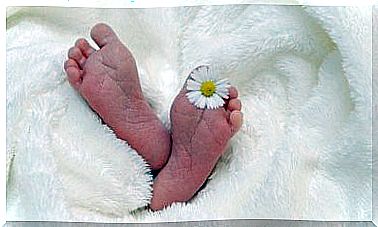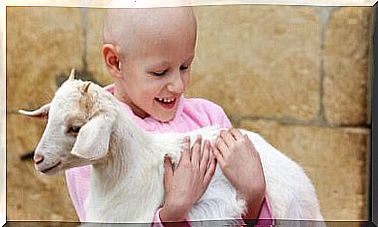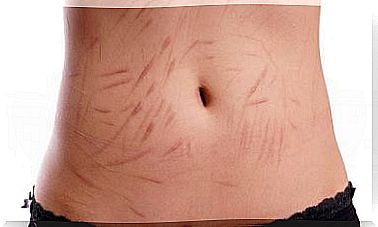What Is Milk Sausage And When Should It Be Treated?

Milk sausage is a more common name for the skin condition seborrheic dermatitis, and gives rise to white-yellowish scabs on the baby’s scalp.
It is not a disease, but a kind of eczema that usually does not itch. It shows through dry and scaly skin – a bit like dandruff – with yellow and sticky scabs. If the presence of these small lumps increases a lot or causes complications, you should seek treatment.
When are children affected by milk sausage?
Milk sausage usually appears during the baby’s second or third week of life and comes in the form of oily and dry skin spots. However, milk sausage can be found in children up to the age of three.
Seborrheic dermatitis affects approximately 10 percent of newborns. The crusts can appear on the head, at and between the eyebrows, behind the ears and sometimes in skin folds.
Milk sausage is linked to genetic and meteorological factors. Hormonal imbalances can also cause the sebaceous glands to release excess oil.
These crusts are not dangerous or painful, but they should not be removed. It can lead to injury or infections.
Milk sausage is not contagious and is not in any way due to poor hygiene.
Causes of milk sausage
Some infants respond to the change in nutrition that occurs after they are born. During pregnancy, the baby receives nutrition through the placenta. After birth, the baby instead gets its nutrition from breast milk or breast milk substitute.
The large amounts of fat then lead to overstimulation of the sebaceous glands, which causes milk sausage. But all children are affected differently.
The hormones that the mother transmits to the baby can also be a possible cause. Some believe that it may be due to an irritation that occurs due to a skin fungus that grows in the sebaceous gland.
Contrary to many people’s beliefs, milk sausage is not a sign of milk allergy or digestive problems.
Other possible explanations include extreme climate, immune system problems, stress or other skin conditions.
It is worth noting that experts agree that milk sausages are harmless. However, the underlying causes are not always as harmless, so it is important to pay attention.
Atopic dermatitis makes infants more susceptible to milk sausage. It is a general irritation that can occur on the skin of a breastfeeding baby, for no apparent reason.
Color and appearance vary depending on the area in which the milk sausage appears. When milk sausage develops in the scalp, it is white or yellow, and is also oily.
If milk sausage appears on the face, it is red in color and comes with yellow crusts. With the right treatment, the skin condition is something that heals quickly.
It is worth remembering that milk sausage can come back as the baby gets older.
A problem with a solution
In cases of mild occurrence, there is no need to worry. Milk sausage usually disappears without treatment, over a period of several months.
If you want to speed up the healing process, you can use a cream or baby oil to soften the crusts until they fall off on their own.
Then massage the affected area gently with a product for children. Then wait an hour before bathing your baby.
You should wash your child’s hair daily with a good quality shampoo bought from a pharmacy, and not with a shampoo bought from a cosmetics company.
You should also brush your baby’s hair, and above all listen to everything your doctor has said.

Another option is to use a wet sponge and shampoo. Dab your baby’s head very gently until some of the crusts come off. Repeat the process every three days. Remember to be extremely careful.
Remember that you are handling an infant’s skin, which is very thin and fragile. Also be extra careful around the soft part of the baby’s head.
Seborrheic dermatitis can spread to the forehead and eyebrows. Then you can use olive oil or almond oil, even if it is present in the crusts.
You can also use emollients to massage your baby’s scalp. These oils can usually be left on overnight.
Then wash your baby’s head in the morning with a shampoo that does not dry out the baby’s hair and scalp. Be sure to use a very soft brush if you want to comb your baby’s hair.
Signs that you should be extra careful
Pay extra attention to whether the milk sausage spreads very much, or if it turns yellowish and red at the edges. If this happens, it is best to book an appointment with a pediatrician.
You should also seek medical attention if the area begins to bleed or spreads beyond your child’s head and forehead.
A pediatrician could then recommend cortisone cream, antibiotic ointment or antifungal agent.
Remember that even though milk sausage may not look so nice, the eczema is easy to treat. Milk sausage in itself also does not pose a danger to your baby’s health.









